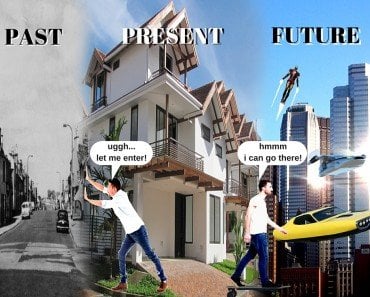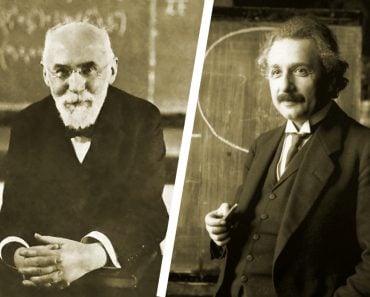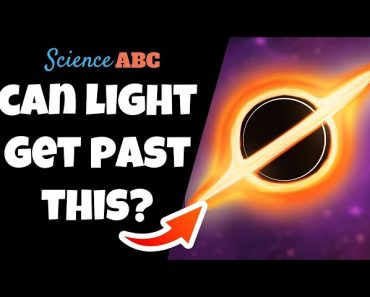If a person were to travel at the speed of light, they would experience a phenomenon known as “time dilation.” This means that time would move slower for them than for someone who is not moving. Additionally, their field of vision would be significantly altered, as they could only see the world through a narrow, tunnel-like window in front of the aircraft they were traveling in.
Many of us might have considered what it would be like to travel at the speed of light. Just imagine the thrill of soaring through the boundaries of time and space and experiencing the universe’s ultimate speed!
Recommended Video for you:
Einstein’s Theory Of Relativity: How It Changed Our Perception Of Time
Before the 1900s, the world firmly believed in Isaac Newton’s view of mass, motion, and gravity. However, at the dawn of the 20th century, Albert Einstein came into the picture and changed this world forever.
Einstein’s Theory of Relativity resolved many uncertainties regarding mass and energy. His mass-energy equivalence equation demonstrated that both mass and energy are interchangeable, which means that mass can be converted into energy and vice versa. He also proposed that no standard frame of reference exists, and everything is relative, including time.
Based on this theory, it was concluded that the speed of light is constant and remains independent of the observer. Therefore, if a person travels at half the speed of light in the same direction as light, the light beam will appear the same as it does to a stationary individual. In other words, the speed of light remains constant, regardless of whether the observer is stationary or in motion.
What Does Mass-Energy Equivalence Mean?
It means that if an object moves at a velocity that is 10% of the speed of light, it will experience an increase in its mass by 0.5% of its original mass. On the other hand, if an object travels at 90% of the speed of light, its mass would be approximately two times its original mass.
Can We Travel At The Speed Of Light?
No, humans cannot survive traveling at the speed of light.
When an object moves at the speed of light, its mass increases exponentially. For instance, the speed of light is 299,792 kilometers per second (186,282 miles per second), and when an object travels at this speed, it behaves as if it has infinite mass.
An infinite amount of energy would be required to propel an object with infinite mass, which is impractical. This is why no object can move at or faster than the speed of light. Attempting to travel faster than light is like going slower when you are at a complete stop. It simply doesn’t make sense!
What If You Moved Almost As Fast As The Speed Of Light?
If we are discussing traveling at speeds close to the speed of light, such as 90% of the speed of light, there would be some fascinating observations.
The person traveling at such a speed would experience time dilation, which means that time would appear to move slower for them than for someone who is not moving at that speed. In other words, time would seem to slow down for the person traveling at high speed.
At 90% Speed Of Light
Imagine traveling to Mars and back at 90% of the speed of light. The total distance covered would be 450 million kilometers, and assuming instant acceleration with no stoppage, the trip would take approximately 16 minutes and 40 seconds, as observed by humans on Earth.
However, as a space traveler, you would only experience 8 minutes and 20 seconds during the entire trip! This is due to time dilation, which occurs at high speeds. The faster you travel, the slower you move through time; hence, the slower you age. Check out this animated video to visualize and understand the concept of time dilation better.
When you traveled to Mars at 90% light speed, humanity on Earth was older by 16.67 minutes, while you aged by just 8.33 minutes! This difference in aging would become much more pronounced at higher speeds, say at 99.99% the speed of light.
At 99.99% Speed Of Light
Now, suppose you could travel at 99.99% of the speed of light. This time, let’s be more ambitious and travel from our solar system to Alpha Centauri, roughly 4.35 light years away from Earth. If you travel at 99.99% the speed of light from Earth to Alpha Centauri and back, with instant acceleration and no stopping, this trip would have taken roughly eight years and eight months for people on Earth observing your trip. During this trip, you would experience only around 1.5 months. In other words, your fellow mates on Earth would have aged 8.7 years after this trip, while you would have aged only one and a half months in comparison!
Redshift And Blueshift
Besides time dilation, the phenomenon of blueshift and redshift would also come into effect if you were to travel at near-light speed. When you leave Earth, the light waves that bounce off you are stretched, which makes the wavelength longer and makes them look red to people on Earth. This effect is called redshift. On the other hand, while returning from your journey at near light speed, the light waves bouncing off you would get squished and compacted together by the time they reach into the eyes of observers on Earth, making you appear blue to observers on Earth. This is called blueshift.
For you, as you travel at that speed, everything in front appears to be squished together into a blurry tunnel. In fact, after a certain speed, you would only see blackness because the wavelength of the light entering your eyes would be out of the visible spectrum.

Although traveling at the speed of light is not practically possible, traveling at near-light speed can also have interesting consequences, such as time dilation, where time appears to slow down for the traveler relative to someone stationary. Time flies at near-light speed, but it also slows down!
References (click to expand)
- Is The Speed of Light Everywhere the Same?.
- The Speed of Light.
- What would happen if you drove your car close to the ....
- Bhaduri, B., Yessenov, M., & Abouraddy, A. F. (2019, January 25). Space–time wave packets that travel in optical materials at the speed of light in vacuum. Optica. The Optical Society.
- Is Time Travel Possible?.













